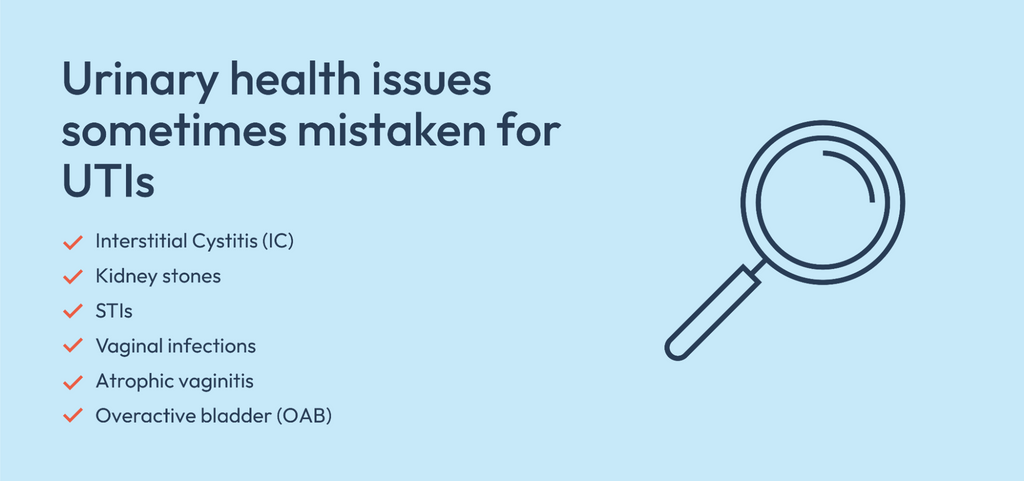Comprehensive Overview to Kidney Stones vs UTI: Medical Diagnosis, Triggers, and Alleviation
Comprehensive Overview to Kidney Stones vs UTI: Medical Diagnosis, Triggers, and Alleviation
Blog Article
Comprehending the Key Differences In Between Kidney Stones and Urinary System Infections: An Extensive Introduction for People
Recognizing the differences in between kidney stones and urinary system infections (UTIs) is necessary for people that may be experiencing comparable signs yet deal with significantly different wellness obstacles. As we explore these vital elements, it ends up being clear that recognizing the distinct qualities of each problem can exceptionally impact patient results.
Overview of Kidney Stones
The formation of kidney stones, a often debilitating and unpleasant condition, highlights the vital significance of maintaining kidney wellness. The primary kinds of kidney stones include calcium oxalate, calcium phosphate, uric acid, struvite, and cystine stones, each with distinct reasons and risk elements.
Several elements contribute to the formation of kidney stones. Dehydration is a significant risk, as insufficient fluid consumption can lead to concentrated urine, promoting crystal development. Dietary practices, consisting of high salt and oxalate usage, can intensify the risk. Additionally, metabolic problems and specific clinical conditions might incline individuals to stone development.
Signs and symptoms of kidney stones can include extreme flank pain, hematuria, and queasiness, which commonly prompt urgent medical analysis. Treatment options differ, varying from raised fluid consumption and dietary alterations to medical interventions such as lithotripsy or surgical elimination, relying on the size and place of the stones. Understanding these elements is crucial for effective avoidance and monitoring.
Introduction of Urinary System System Infections
Urinary system system infections (UTIs) represent an usual yet significant health issue, impacting millions of individuals every year. These infections take place when bacteria get in the urinary system, which consists of the kidneys, ureters, bladder, and urethra.
The threat elements for creating a UTI consist of sex, certain kinds of contraception, urinary system retention, and a background of previous infections. People with damaged pre-existing conditions or immune systems, such as diabetic issues, might likewise go to greater threat. UTIs can be categorized into 2 major types: complex and straightforward. Straightforward UTIs are normally limited to the bladder and are a lot more common in healthy individuals, while complicated UTIs might entail the kidneys and take place in those with underlying health and wellness issues.
Trigger medical diagnosis and therapy are necessary to protect against difficulties, such as persistent infections or kidney damages (Kidney Stones vs UTI). Commonly, UTIs are treated with prescription antibiotics, and preventative measures can be employed for those with regular events
Usual Signs Contrast
Signs and symptoms of urinary system system infections and kidney stones can frequently overlap, leading to complication in medical diagnosis. In contrast, kidney stones have a tendency to trigger extreme, sharp pain that radiates from the back to the reduced abdomen and groin, commonly defined as colicky pain.
Furthermore, UTIs may be come with by high temperature and chills, particularly in more serious instances, while kidney stones can lead to nausea and vomiting due to intense discomfort. While pain throughout peeing is a trademark of UTIs, kidney stones normally offer with more acute discomfort episodes, which might come and go.
Diagnosis Techniques
Just how can health informative post care specialists properly differentiate in between kidney stones and urinary tract infections? The diagnostic procedure begins with a detailed medical history and an in-depth evaluation of the person's symptoms. Medical professionals typically execute a physical exam, which may expose tenderness in the abdominal area or flank region, directing the analysis pathway.
Lab tests play an essential duty in distinguishing between these two problems. Kidney Stones vs UTI. A urinalysis can recognize the visibility of blood, crystals, or bacteria, which are a measure of either problem. In situations of urinary system system infections, the urinalysis might reveal a substantial existence of leukocyte and nitrites, while kidney stones might present with specific crystals
Imaging studies, such as abdominal ultrasound or computed tomography (CT) checks, are crucial for visualizing kidney stones. These imaging methods allow medical care companies to analyze stone size, area, and potential obstructions in the urinary tract. In comparison, urinary tract infections commonly do not call for imaging unless complications are presumed.
With each other, these analysis techniques empower health care professionals to precisely distinguish and detect in between kidney stones and urinary system infections, making sure that clients obtain ideal care and administration.
Therapy Options and Avoidance
While both kidney stones and additional reading urinary system system read review infections (UTIs) require prompt treatment, their monitoring approaches vary dramatically.
The treatment for kidney stones typically entails pain management, hydration, and in many cases, medical procedures such as extracorporeal shock wave lithotripsy (ESWL) or ureteroscopy to break or get rid of down stones. Patients are often advised to raise liquid intake to assist in stone passage and minimize reappearance. Nutritional modifications may likewise be needed, relying on the stone kind.
On the other hand, UTIs are primarily treated with prescription antibiotics to remove the bacterial infection. The certain antibiotic recommended depends upon the germs identified and local resistance patterns. Extra actions, such as enhanced fluid consumption and urinary system anesthetics, might help reduce signs.
Avoidance techniques differ as well; for kidney stones, preserving ample hydration and sticking to dietary limitations can be reliable. For UTIs, preventative strategies consist of appropriate health practices, peing after sexual intercourse, and potentially preventative antibiotics for recurrent infections. Recognizing these therapy and avoidance modalities is vital for effective management and to reduce the threat of difficulties related to both conditions.
Verdict

Recognizing the distinctions in between kidney stones and urinary system tract infections (UTIs) is crucial for patients who may be experiencing similar signs yet deal with vastly different wellness challenges. The main kinds of kidney stones include calcium oxalate, calcium phosphate, uric acid, struvite, and cystine stones, each with unique reasons and threat variables.

Report this page